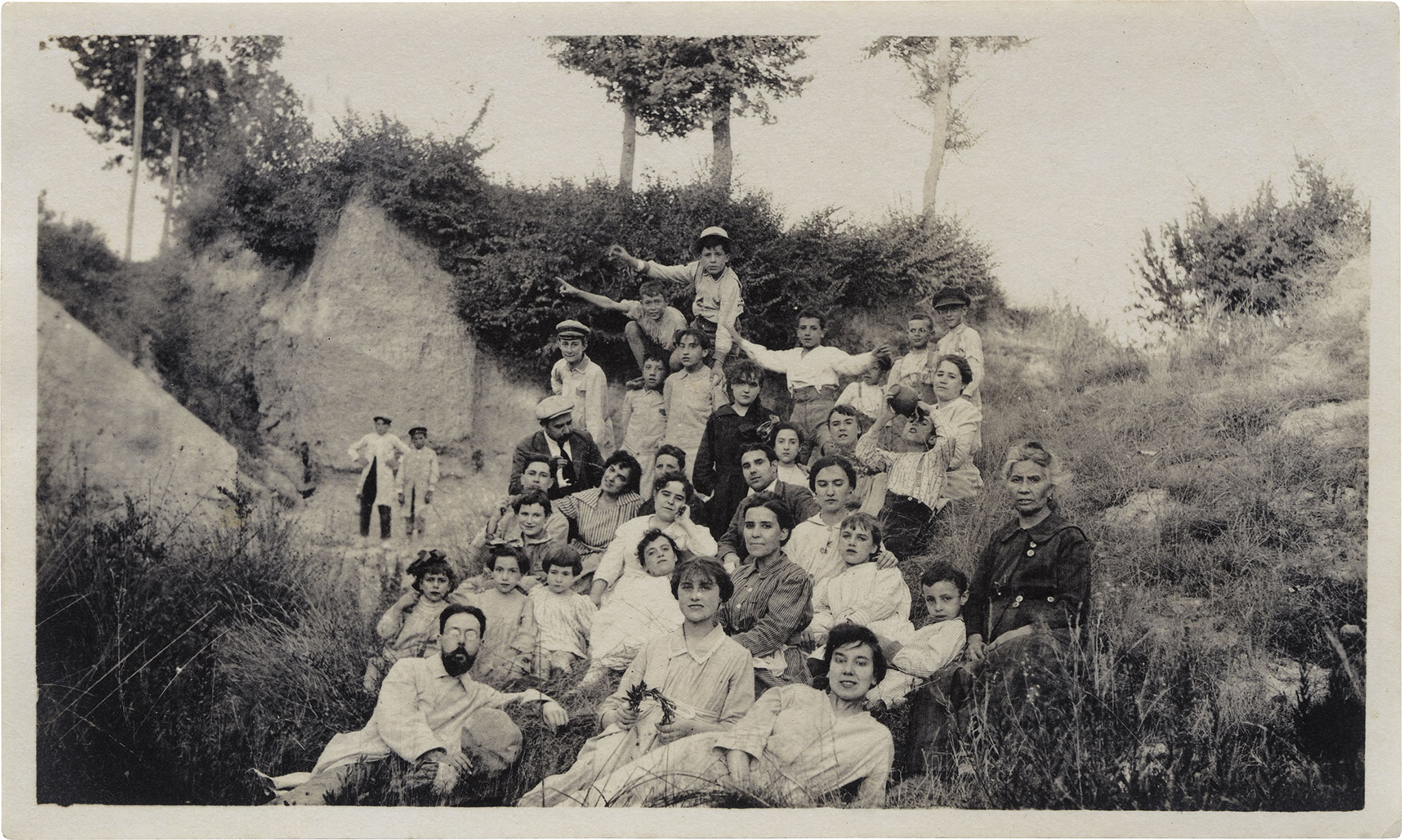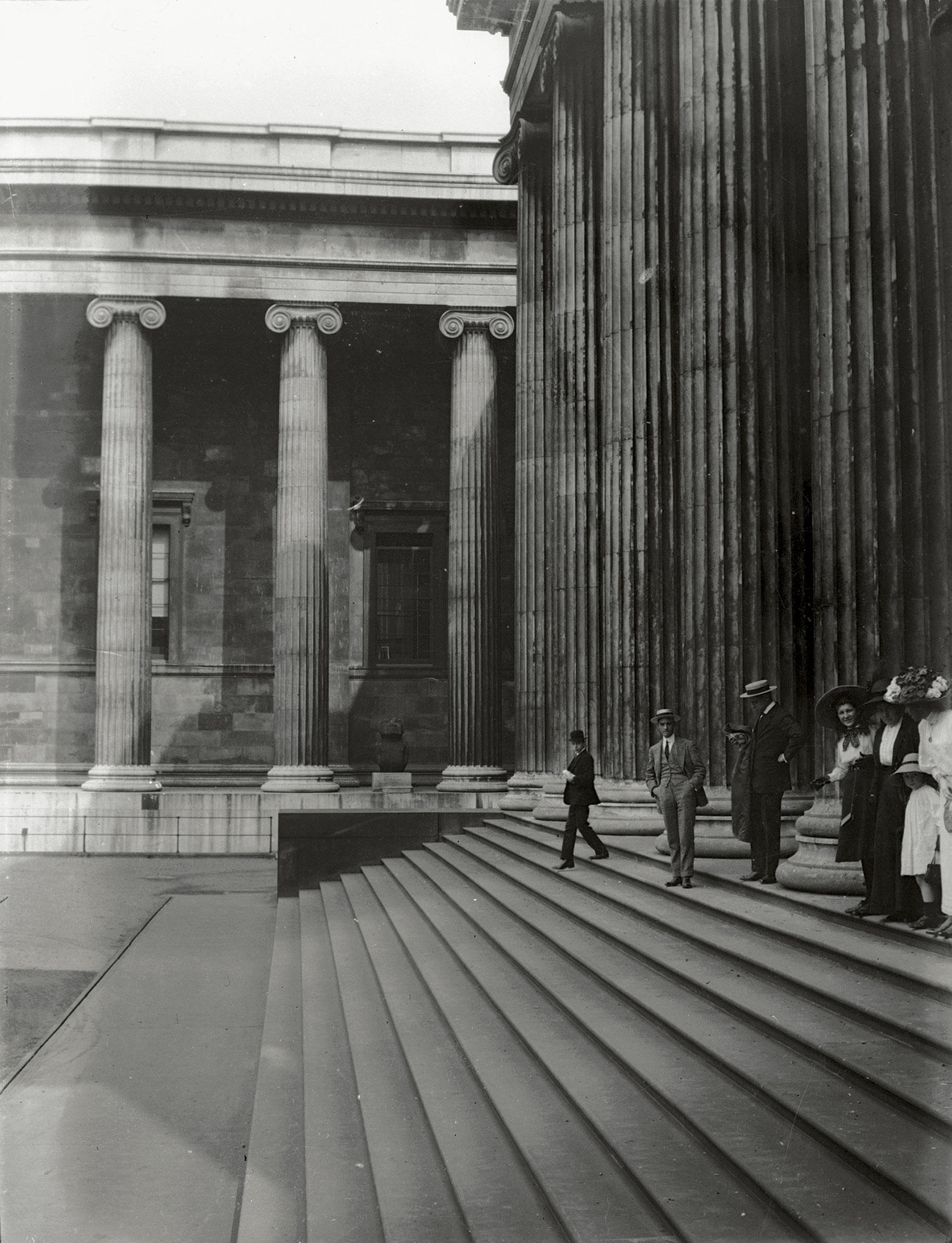The expression "domestic camera" refers to the amateur use of the photographic camera and the images obtained with it, that is, created outside of professional production logic without implying that it was not traded at some point or that it was not occasionally participating in other markets such as art.
The images made by amateurs historically brought together the emotional and communicative dynamics of different social groups and offered valuable information about the past and the different ways of seeing the world of that time.

Portrait of a group from the Ateneu Igualadí of the Working Class on an excursion in La Llacuna, Barcelona, 1920s. Unknown authorship. Silver in gelatin. Vintage copy. Núria F. Rius Collection. Courtesy of Fundación MAPFRE.
The images made by amateurs historically brought together the emotional and communicative dynamics of different social groups and offered valuable information about the past and the different ways of seeing the world of that time.

Portrait of a group from the Ateneu Igualadí of the Working Class on an excursion in La Llacuna, Barcelona, 1920s. Unknown authorship. Silver in gelatin. Vintage copy. Núria F. Rius Collection. Courtesy of Fundación MAPFRE.
For decades, amateur or domestic photography was left out of canonical historiography due to its massive and self-produced nature, coupled with the fact that it was often considered irrelevant or poorly executed. However, the images made with the domestic camera, far from being simple entertainment or translating a naive view, condensed social imaginaries, aesthetic features, commercial and even political discourses, and therefore help to understand the different social and cultural at a given moment in history.
Photography was the most common visual means of representing people and their surrounding reality throughout the 20th century. However, mass access to this medium was not effective until the end of the 19th century. During this period, the technical improvements introduced in the devices, as well as the appearance of the new silver emulsion in gelatin, more stable, faster, and cheaper, facilitated access to this discipline to a very wide public, while its use was abandoned. purely artisanal use to enter into the dynamics of industrial production and consumption. The photographic camera, no longer needing a tripod, became another accessory of modern times and generated its own visual culture around the self, the family, the social groups of belonging, and the different dominant imaginaries of the time.

Entrance to the British Museum, London, 1912. Photography by Hermenter Serra de Budallés. Gelatin silver from glass negative. National Archive of Catalonia (ANC), Hermenter Sierra de Budallés Fund, Sant Cugat del Vallès. Courtesy of Fundación MAPFRE.
In Catalonia, the new love for photography took root strongly in the 1880s and aroused extraordinary social fervor until the outbreak of the Civil War, in the summer of 1936. Shops, press, and cultural entities, as well as people from different social classes, genders, and ages, devoted themselves to their practice, whether they were simple amateurs, or amateurs, as the most ambitious amateurs in their practice of photography were known at the time. The camera was introduced into the domestic space of thousands of people and, from then on, contributed to shaping ways of apprehending reality and expressing the social and cultural aspirations of its time. The images made with the domestic camera, far from being an unsophisticated and uninteresting popular cultural form, condensed innumerable social signs, practical objectives, and aesthetic references.
The exhibition presented by Fundación MAPFRE offers a thematic tour of the history of amateur photography in Catalonia between 1880 and 1936. The nearly three hundred pieces that makeup it (photographs, objects, and period documents) have been brought together thanks to the collaboration of seventeen public institutions (including archives, museums, libraries, and research centers) and nine private collections.





































